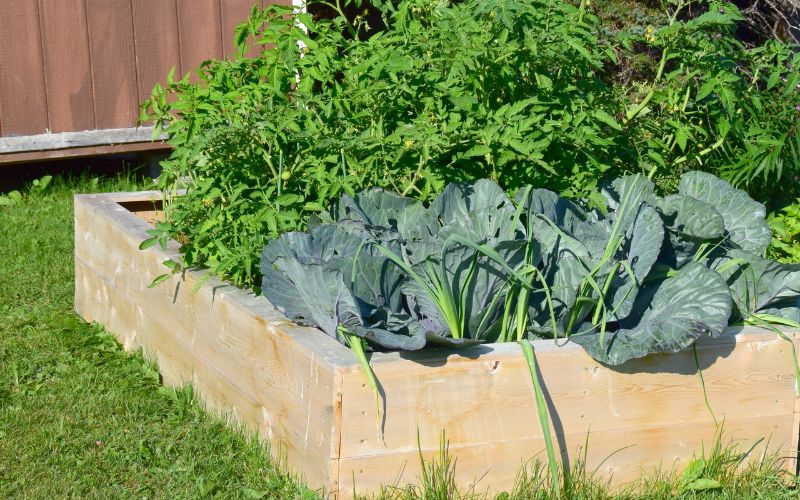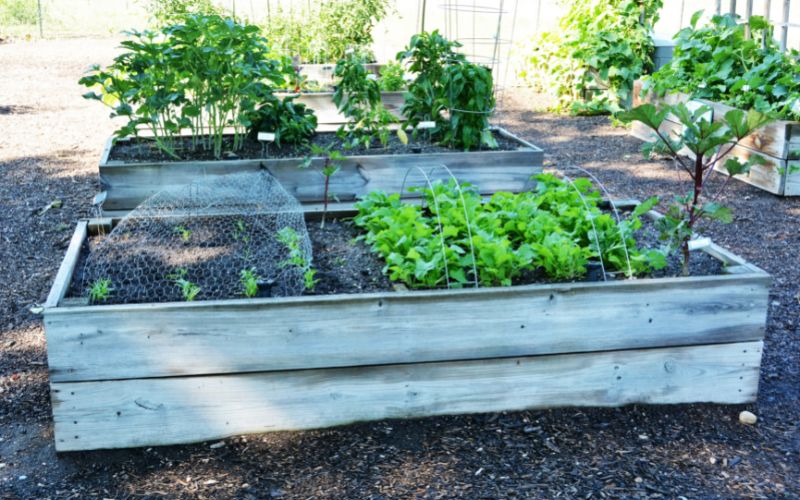If you’re thinking about putting in raised beds in your garden, one of the questions you might be wondering about is whether or not you should line them with plastic.
After all, plastic is often used to line things like ponds and swimming pools, so it stands to reason that it could be helpful in keeping soil and water where you want them in a raised bed.
There are a few things to consider before deciding whether or not to use plastic in your raised beds. For one thing, plastic can sometimes impede drainage, which is obviously not something you want in a garden bed. Additionally, over time, the sun can cause plastic to break down and leach chemicals into the soil, which can then be taken up by plants.
Does a raised bed need a liner?
A raised bed doesn’t *necessarily* need a liner, although in some cases it can be helpful.
If you’re concerned about soil erosion or want to make sure your raised bed retains moisture then lining it with plastic may be a good idea.
Just keep in mind that you’ll need to take care of the liner (replacing it as needed) and that there are some potential downsides to using plastic in your garden.
A liner on the base of a raised bed can help to prevent weeds from growing up through the base of the bed but, by the same token, a liner could also prevent deep rooted plants from growing properly in your raised bed.
What are the benefits of using a plastic liner in a raised bed?
There are a few benefits to using a plastic liner in a raised bed.
First, it can help to prevent soil erosion. If you live in an area with heavy rains, this can be especially important.
Additionally, a liner can help to retain moisture in the soil.
This can be helpful if you live in a dry climate or if you’re trying to grow plants that require a lot of water.

What are the downsides of using a plastic liner in a raised bed?
There are also a few downsides to using a plastic liner in your raised bed.
For one thing, as we mentioned earlier, plastic can sometimes impede drainage.
If you live in an area with heavy rains, this can be especially problematic.
Additionally, over time, the sun can cause plastic to break down and leach chemicals into the soil, which can then be taken up by plants.
Plastic liners can be useful for protecting the sides of your raised beds
If your raised beds are made from wood then, over time, they will degrade due to water, contact with the soil and the general weather.
Lining the sides of your raised bed with plastic can help to protect the timber, increasing it’s life span by reducing contact with damp soil.
Should I use a plastic liner in my raised bed?
As with anything, there are pros and cons to using a plastic liner in your raised bed.
It’s important to weigh those pros and cons and decide what’s right for you and your garden.
If you’re concerned about soil erosion or retaining moisture, then a plastic liner may be a good idea.
Just keep in mind that you’ll need to take care of the liner (replacing it as needed) and that there are some potential downsides to using plastic in your garden.
What is the best type of plastic to use in a raised garden bed?
There are a few different types of plastic that can be used for raised garden beds. One option is to use heavy duty black plastic.
This type of plastic is thick and durable, making it a good choice for raised beds. However, it can also be difficult to work with.
Another option is to use landscape fabric.
This is a lightweight fabric that allows light and air to pass through while still providing some protection from weeds and erosion.
Landscape fabric is a good choice for raised beds because it’s easy to work with and doesn’t impede plant growth.
Ultimately, the best type of plastic to use in your raised bed will depend on your specific needs and preferences.
If you’re concerned about soil erosion, then a heavy duty plastic may be a good choice.
However, if you want something that’s easy to work with and won’t impede plant growth, then landscape fabric may be a better option.
How often should I replace my plastic liner?
Plastic liners can last for several years but, over time, they will degrade due to sun exposure, contact with the soil and the general weather.
Once a liner starts to degrade, it’s important to replace it so that your raised bed continues to function properly.
Depending on the type of plastic you use and the conditions in your garden, you may need to replace your liner every one to three years.
Final Words
Plastic liners can be a helpful addition to raised beds, but it’s important to choose the right type of plastic for your needs and to replace the liner as needed.
With proper care, your plastic liner can help your raised bed last for many years.






